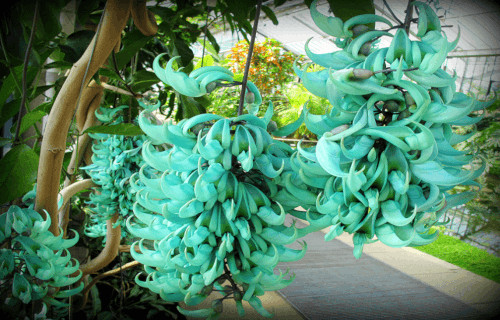
We hope that each of you, our readers, will enjoy and appreciate this article we present about these 5 Remarkable Asian Herbaceous Plants. It was our pleasure to gather the information for you. May it provide you with both education and increased awareness.
Certainly, these few species listed herein represent only a portion of the similar marvels in this region. It’s our belief, though, that they serve as excellent representations of the wonders that exist. Check out some of our other articles for similar marvels.
Moon Orchid
Moon Orchid Facts
- Starting off this article about these 5 Remarkable Asian Herbaceous Plants we give you the gorgeous species known as the Moon Orchid.
- This gorgeous Angiosperm, with a nature that might surprise you, most frequently goes by the common name across its range. It does have a few other, alternate general names, though, These include the terms moth orchid, and also the anggrek bulan.
- Among scientific professionals, such as researchers, it goes by a far different name, however. That term, though, is a bit of a mouthful for non-professionals. That’s because the marvel also bears the tongue-twisting moniker of the Phalaenopsis amabilis.
- The flora received the official name that it currently holds due to the efforts of the German-Dutch botanist, Charles Ludwig de Blume. It previously held other names, assigned by other researchers. His work, however, changed it to the current one in 1825.
- For now, the magnifent creation of Nature appears to be maintaining a population base that’s both stable and sufficient. This fortunate fact further seems to hold true throughout the entirety of its range. The IUCN, therefore, has no current listing for it.
- The dazzling Moon Orchid nonetheless does face at least a few potential threats to its continued existence. Illegal collection of the wonder from its natural habitat continues, despite efforts to curb the practice. Invasive species also pose a potential threat.
- Factors such as habitat degradation or outright destruction pose further dangers. Both of these occur chiefly due to the actions of man, either directly or indirectly. Likewise, the accelerating effects of climate change also threaten it, like most other species.
Moon Orchid Physical Description
The aptly-named Moon Orchid easily impresses those who encounter it with its celestial beauty, to be ceertain. Yet, sheer visual appeal alone isn’t the only remarkable characteristic of this marvelous Angiosperm. The gorgeous flora also has a fascinating physical nature.
That’s because this particular variety of orchid evolved as what botanists call epiphytic and lithophytic. That means that this stunner grows not in the soil, but either on the surface of a host plant, or on rocks. Nature never fails to amaze with its wondrous resourcefulness!
Those incredible roots occasionally attain lengths of up to 3.3 ft (1 m). These also develop extremely flattened in shape. Each of these vital structures additionally develops as quite narrow. Each typically only measures about 0.12 – 0.16 in (3 – 4 mm) in overall width.
Its foliage, meanwhile, also merits notice. Individual plants produce 2 – 8 distinctive leaves apiece. The leaves generally present either an egg-shaped or oblong structure. Lengths further average from 5.9 – 12 in (15 – 30 cm). Widths, though, average 1.6 – 2.8 in (4 – 7 cm).
The stems each Moon Orchid produces from which to display its blooms averages 3.9 – 12 in (10 – 30 cm) in length. This structure, however, typically remains concealed by the bases of the leaves. Each branch also produces between 2 – 20 long-lasting flowers on short stalks.
But, it’s the blooms that easily garner the most interest. These average 2.4 – 2.8 in (6 – 7 cm) in length, and 2 – 3.1 in (5 – 8 cm) in width. The labellum, which attracts its pollinators, displays white, with yellowish and red markings. The blooms, though, show brilliant white.
- Kingdom: Plantae
- Phylum: Tracheophytes
- Class: Angiosperm
- Order: Asparagales
- Family: Orchidaceae
- Genus: Phalaenopsis
- Species: P. amabilis
Moon Orchid Distribution, Habitat, and Ecology
Fortunately for the mesmerizing Moon Orchid, it evolved as native to a comparatively wide section of the globe. That’s due to the fact that populations of the beautiful plant appear in both parts of Asia, and the continent of Australia. That dispersal gives it an advantage.
Within its concentration in Asia, it appears from Palawan Island, in the Philippines, to Borneo. It also lives in parts of Java and Sumatra. At least three recognized subspecies also inhabit much of the same range. In Australia, it mainly lives in Paluma Range National Park.
Though exceptions occur, this marvel displays preferences for its choice of habitat. That’s due to the fact that the vast majority of specimens develop in regions of extremely precise ecological factors. These consist of rainforest areas, with high humidity and good air flow.
It’s also precise concerning other factors. Given its somewhat unusual nature, it requires a physical host to cling to. In its native state, this most often consists of trees. It does, however, sometimes appear on stones. Yet it rarely clings to man-made structures in its area.
Like most plants, the Moon Orchid accomplishes its reproduction via pollination. Also like others of its kind, it achieves this through the actions of insect. In its case, this mainly occurs due to the visits of local bees. Interestingly, though, its mainly carpenter bees that visit.
It also plays an important cultural role in parts of its range. In Indonesia, it represents one of three official National Flowers. The plant holds similar importance in other regions as well, however. It’s also the official flower of Kota Kinabalu, the capital of Sabah, Malaysia.
Lotus corniculatus
Lotus Corniculatus Facts
- Next up in this compilation of 5 Remarkable Asian Herbaceous Plants comes the mesmerizing beauty known as the Lotus corniculatus.
- The term we’ve used here serves as the scientific name of a stunning and extremely unusual, small flowering plant. It also goes by several common names, though. These include the birdsfoot deervetch, and even the comical eggs and bacon.
- But, regardless of the name one uses for it, the gorgeous plant remains a true marvel of Nature. This actually holds true for reasons other than just its beauty, however. Believe it or not, the stunning species actually constitutes a member of the pea family.
- You do not want to eat it, though, regardless of its remarkable visual appeal. That’s due to one very astonishing fact. That’s the startling fact that this botanical beauty actually contains naturally occurring trace amounts of the deadly chemical cyanide.
- In extremely small amounts, however, this beautiful and remarkable species has some specific medicinal uses. To the great surprise of many people, though, the beautiful plant also actually gets widely used as a source of forage for many types of livestock.
- The majority of animal species kept as livestock, fortunately for them, have an advantage over human beings. That’s true since many of these animals can eat the beautiful, yet quite dangerous, Lotus Corniculatus without incurring harmful effects.
- As a rule, most animals have a much greater natural tolerance for small concentrations of cyanide than homo sapiens. Fortunately, the flora also has a comparatively wide range of natural distribution. Therefore, the IUCN currently has no listing for it.
Lotus Corniculatus Physical Description
Most notably, though seemingly extremely delicate, the magnificent Lotus Corniculatus surprises most people. That’s due to the fact that this particular variety of Angiosperm conceals a great many surprises. Among those is the fact that it’s actually quite hardy.
Nonetheless, sheer physical size does not rank as one of the astounding characteristics of the beautiful Angiosperm. That remains true since this herbaceous plant only achieves a maximum known height of about 8 in (20 cm) unless supported by other plants.
This stunning flora also most commonly grows in a sprawling manner along the ground. It rarely does so over great distances, however. The small flowers of the gorgeous Lotus Corniculatus additionally display combinations of orange and yellow color.
Not surprisingly, since it is part of the pea family, the seeds further develop in small, elongated pods. The leaves of the remarkable plant also most commonly grow in groups of five. Typically, three of these form a natural trefoil pattern over the other two.
- Kingdom: Plantae
- Phylum: Angiosperms
- Class: Eudicots
- Order: Fabales
- Family: Fabaceae
- Genus: Lotus
- Species: L. corniculatus
Lotus Corniculatus Distribution, Habitat, and Ecology
Surprisingly, the visually breathtaking, and scientifically fascinating, Lotus Corniculatus remains endemic to a remarkably large section of the globe. In point of fact, the intriguing plant inhabits a wide swathe of the continents of Europe, Asia, and Northern Africa.
Within that truly impressive geographical range of habitation, the plant also predominantly appears in regions of grasslands. Regardless of its habitat, though, this marvelous species of flora qualifies as far more than just another visually appealing creation of Nature.
This particular Angiosperm also has an incredibly extreme level of durability. This holds true even to the point of surviving being trampled by livestock. In addition, this unexpectedly tough species also grows equally well in both nutrient-rich soils and nutrient-poor soils.
The Lotus Corniculatus additionally most commonly grows in areas that most plants would find forbidding. In point of fact, this primarily consists of regions of grassland with a high percentage of sand. Few species with comparable beauty can make this unusual claim.
Due to its comparative hardiness, farmers often actually use it in cultivation, especially in certain parts of Europe. As a result of this surprising practice, this wonder of Nature has become considered an invasive species in some portions of Australia and North America.
Jade Vine

Jade Vine Facts
- Our third choice for inclusion in this gathering of these 5 Remarkable Asian Herbaceous Plants bears the perfectly apt name of the Jade Vine.
- Its highly unique nature ranks as the most noteworthy fact about the gorgeous Angiosperm. The beauty of this plant conceals the point that it’s actually a legume. Botanists list them as closely related to beans such as the runner bean and kidney bean.
- It also holds other common names, though. These include such terms as the emerald vine and the turquoise jade vine. Among scientists, though, it’s typically known by its formal name. That, however, is the tongue-twisting Strongylodon macrobotrys.
- While the seed pods of the species remain technically edible, the plant is not for consumption. It does have other uses, though. That’s true because of the sheer beauty of the flowers it produces. Cultivators grow it mostly as an ornamental species.
- For now, the IUCN does not have a classification of the species on its Red List of Threatened Species. But, experts consider it endangered due to its limited range and the threats it faces. These primarily include habitat loss and climate change.
- The species has another unusual distinction, separating it from related species. Unlike the majority of plants, a specific bat species forms the primary pollination of this species. Certain butterfly species also play a small role in its pollination, however.
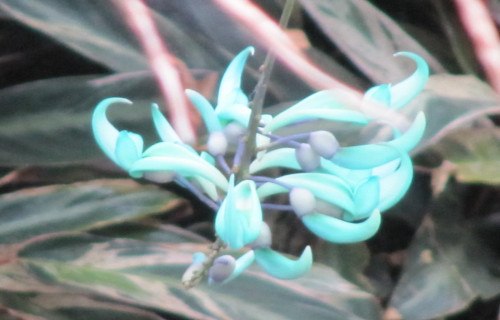
Jade Vine Physical Description
The bright and beautiful Jade Vine evolved to grow as a perennial vine. Plus, the remarkable plant also has a fascinating trait. That holds true due to the fact that it doubles as a legume. The strong and fast-growing vines can attain lengths of as much as 59 ft (18 m).
The impressively resourceful plant also clings to and climbs on virtually anything it encounters. This source of support primarily consists of various trees within its native environment. The leaves of the vine have a pale green color and consist of three leaflets.
When these leaves fall, a surprising transformation takes place. This holds true due to the fact that at that time, these turn to either a dark blue or purple in color. The seed pods of the Jade Vine rarely exceed 6 in (15 cm) in length. These often contain up to 15 seeds.
Yet the flowers of this visually stunning plant understandably garner the most attention. That’s partly because the claw-shaped blooms hang in trusses consisting of as many as 75 flowers. These remarkable trusses can reach lengths of as much as 9.8 ft (3 m).
- Kingdom: Plantae
- Phylum: Angiosperms
- Order: Fabales
- Family: Fabaceae
- Genus: Strongylodon
- Species: S. macrobotrys
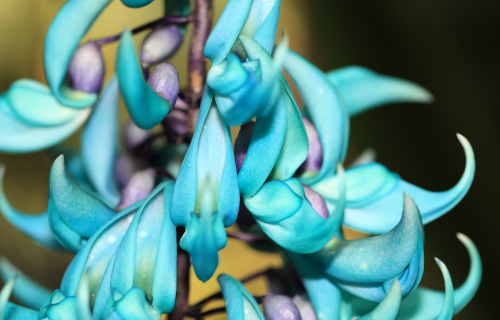
Jade Vine Distribution, Habitat, and Ecology
Since the stunning Jade Vine grows natively only in the Philippines, its habitat is quite restricted. Even there specimens only occur in regions of montane and tropical forests. It appears most often beside streams or in ravines, the latter for unknown reasons.
This amazing species has also been transplanted to a few other regions of the world. This artificial distribution most notably includes the country of South Africa. The species further has a strong presence in greenhouses and botanical gardens worldwide.
Its unique pollination relationship with bats arose due to a very specific reason. This occurred as a result of the shape of its distinctive blooms. The vines also generally intertwine themselves along the branches and trunks of trees, creating a network.
A mature specimen of the Jade Vine further requires about two years to flower and produce fruit. Most commonly, the plant amazing grows prolifically in its native habitat. Unfortunately for those who attempt to grow it, it’s difficult to propagate in cultivation.
Petra Iris
Petra Iris Facts
- Now appearing in this article about 5 Remarkable Asian Herbaceous Plants is the marvel of evolution simply called the Petra Iris.
- This gorgeous product of Nature and evolution most frequently goes by the somewhat informative common name due to its range. For the moment, the stunning Angiosperm has no other generally accepted non-scientific moniker by which it’s known.
- Scientific professionals, meanwhile, such as researchers, use its formal name when referring to it. Thankfully for those among us who aren’t scientists, that’s a relatively easy name, as such go. That’s because it bears the formal name of the Iris petrana.
- It received that title due to the work of the respected American botanist, John Edward Dinsmore. He accomplished the first official acknowledgement of the plant as a separate and distinct species. It also bears its name in honor of the ancient city of Petra.
- For the moment, the IUCN has no listing of the species on its Red List of Threatened Species. The exact reasons for this omission remain unclear, however. At least one country within its range, however, formally lists it as an Endangered Species.
- Since the 1950’s, a dramatic decline in its population has been noted by officials. Conservation efforts are underway, in some regions, though. In one country, its only known, very tiny population grouping now lies within the confines of a Nature Reserve.
- Regrettably, the marvelous Petra Iris faces several threats to its existence. In the near term, uncontrolled grazing by local animals poses a danger. It’s also often picked by locals. The greatest threat it faces in the long term, though, is climate change.
Petra Iris Physical Description
The stunning Petra Iris serves as yet another example of the fact that Nature places no importance on sheer physical size. That’s true since this plant develops as a relatively small one. That holds particularly true in comparison with many of its closely related species.
This botanical wonder of evolution develops from rootstalks, known as rhizomes. Each stalk produced by this structure further develops as comparatively thin and erect. These stay short, however. An average height, in fact only equals approximately 10 in (25 cm).
These stalks also produce multiple leaves, developing near the base. This folaige has an elongated, sword-like shape. Each also manifests a light grayish-green color. Evolution also provided the several leaves each flower develops with a thin, waxy coating for its protection.
It’s the remarkable blooms of the Angiosperm, though, that garner the most interest. That’s due to their highly distinctive pattern of coloring. Intriguingly, these appear in several, various dark shades. Those range from brown or a burgundy hue, to dark violet or purple.
Some specimens of the amazing Petra Iris, however, in the right lighting, appear to possess a wholly black shade! It’s these specimens that understandably attract the most interest. Its two sets of petals also have different appearances. One evolved a set of beard-like hairs.
- Kingdom: Plantae
- Phylum: Angiosperm
- Class: Monocots
- Order: Asparagales
- Family: Iridaceae
- Genus: Iris
- Species: I. petrana
Petra Iris Distribution, Habitat, and Ecology
Unfortunately, the tantalizing Petra Iris evolved as native to an extraordinarily restricted zone of habitation. That description as unfortunate applies to both the plant itself, and those of us who appreciate Nature. It’s also currently unknown if it ever appeared elsewhere.
In general, its evolution placed it within the confines of the temperate zones of the continent of Asia. There, however, it appears in only a few, very tiny areas. These include near one town in southern Jordan, the Negev Desert, in Israel, and the Dead Sea Basin.
To the astonishment of many individuals, the intrepid plant also developed as native to habitat types hostile to most of its related species. Incredibly, this Angiosperm makes its home in highly arid regions. More specifically, it’s actually an established desert-dweller!
It also appears in related regions, though. These consists of areas of marginal lands next to the same desert sections. All known concentrations of this marvel of Nature share yet another limitation. These all appear at elevations ranging from 1,410 – 1,870 ft (430 – 570 m).
In the wild, the Petra Iris most commonly propogates via seeds. This action may also be accomplished via the rhizomes it produces, however. Those same seeds, though, spread by a combination of methods. The wind blows some, yes, but local insects also carry others away.
Like many of its relatives, this delicate flora also evolved as moderately toxic in nature. This further applies to most parts of the species. If ingested, stomach discomfort and vomiting often occur. Even handling certain parts of the plant sometimes causes irritation of the skin.
Cypripedium calceolus
Cypripedium calceolus Facts
- Closing out this collection of these 5 Remarkable Asian Herbaceous Plants we present the wondrous flora bearing the title of the Cypripedium calceolus.
- The tongue-twisting term applied to the flora here serves as the official scientific name of a stunning variety of plant. Unfortunately for most of its fans, the magnificent orchid species currently has no generally accepted common name.
- The first recorded scientific description of this beautiful wonder of Nature occurred in Germany, in 1753. Later, the renowned Swedish botanist Carl Linnaeus became the first person to officially place it within a scientific classification.
- In fact, that official placement puts it in the Family collectively known as the Lady’s Slipper Orchid. Its particular appearance, however, often leads to its being confused with other, visibly similar species, at least by non-professional observers.
- Quite thankfully, for those who appreciate its beauty, the Cypripedium calceolus appears to be maintaining a sufficient and stable population base. The IUCN, therefore, lists the natural beauty as Least Concern on its Red List of Threatened Species.
- The gorgeous plant must, however, still be considered to be facing at least some risks to its continued existence. Though still abundant, human encroachment on its habitat could pose a threat in the future. Plus, it now faces the threat posed by climate change.
Cypripedium calceolus Physical Description
Regardless of its nearly impossible to pronounce name, the magnificent Cypripedium calceolus easily dazzles the eye. Yet it does not do so just because of its appearance, though that’s certainly lovely. It also represents one of the largest of the orchid varieties in its range.
The highly visually distinctive Angiosperm attains a height of as much as 23.6 in (60 cm). Along the length of its delicate, light-green colored stem, it further produces impressive foliage. Its 3 – 4 leaves also average 7.1 in (18 cm) in length, and 3.5 in (9 cm) in width.
Each individual plant typically produces 1 -2 of its spectacular blooms. These themselves also stand out for more than just their undeniable beauty, since they’re also somewhat larger than many of their relatives. More precisely, these average about 3.5 in (9 cm) in width.
Its the color scheme of the awesome Cypripedium calceolus that truly stands out, however. Its long, frequently slightly twisted, petals vary from reddish-brown to black, but may occasionally be green. It also has a large, slipper-shaped labellum, with red dots.
- Kingdom: Plantae
- Phylum: Angiosperms
- Class: Monocots
- Order: Asparagales
- Family: Orchiaceae
- Genus: Cypripedium
- Species: C. calceolus
Cypripedium calceolus Distribution, Habitat, and Ecology
Thankfully, the breathtaking Cypripedium calceolus possesses a remarkably wide distribution. In point of fact, it inhabits a relatively broad swathe of the world. This extensive range includes nearly every country in Europe, and also many of those in Asia, as well.
Quite sadly, its numbers have become severely diminished in the European portion of its range, in recent decades. In all parts of its range, though, it displays decided preferences for its habitat. The great majority of its numbers appear in temperate forests and shrubland.
Nonetheless, in its European range, the plant has adapted to another type of environment. This consists of areas of humus, over a limestone base, and within partially shaded woodlands. In all parts of its range, it lives at altitudes of no more than 6,890 ft (2,100 m).
For reasons that still elude researchers, the marvelous Cypripedium calceolus also frequently appears in association with another plant. A large percentage of its population grows in close proximity to stands of hazel trees, sometimes intermingling with them.
Like many of its related species, this wonder of Nature achieves its pollination via the action of a wide range of insets. The majority of these, though, seem to be formed of various species of bees. Meanwhile, it itself seems to be a popular food for slugs and snails.

5 Remarkable Asian Herbaceous Plants
We hope that each of you enjoyed reading, and hopefully learning from, this article we’ve written about these 5 Remarkable Asian Herbaceous Plants. It’s also our hope that doing so has left you with either a new or renewed appreciation for such wonders of Nature.
Unfortunately, however, many of their kindred around the world now find themselves facing strong threats to their continued existence as a species. Many of those dangers, in fact, stem from the actions of mankind. We must do all we can to protect and preserve them all.
Check out our other articles on 5 Beautiful Black Sea Species, Spectacular Dolphins Throughout Our World, 3 Magnificent Manatees, Earth’s Many Stunning Waterfalls
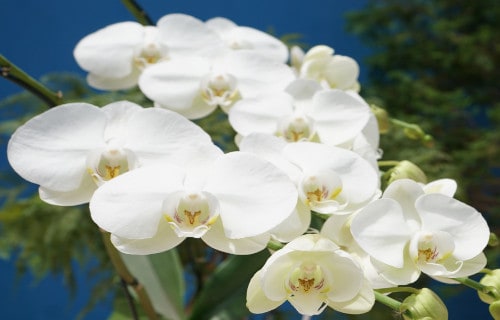
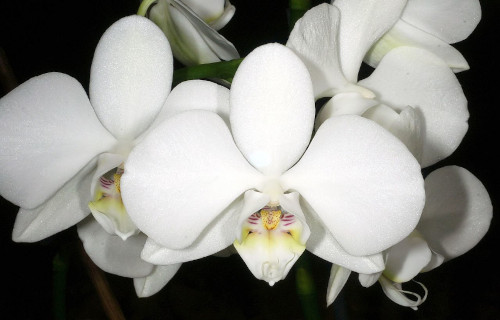
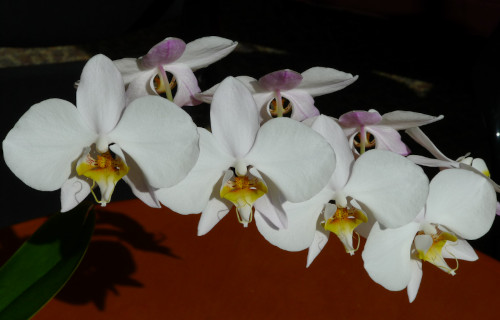
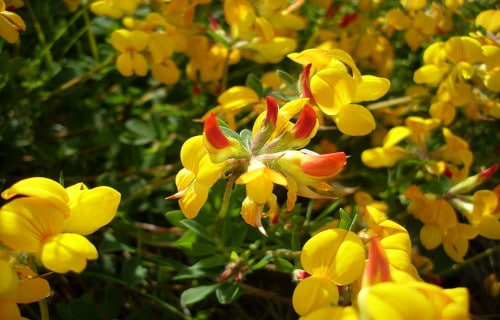
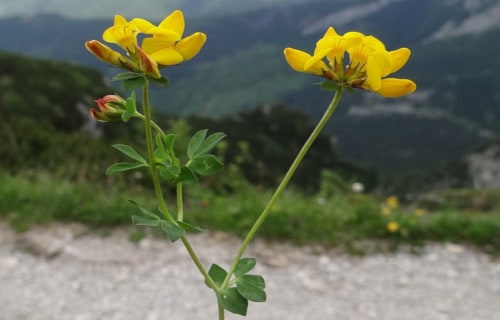
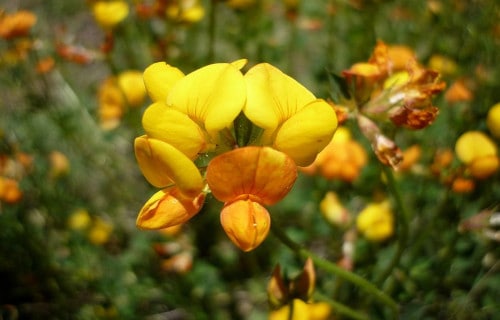
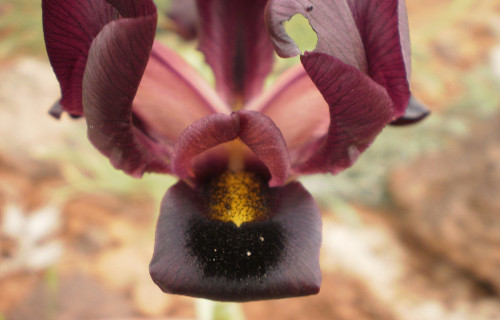
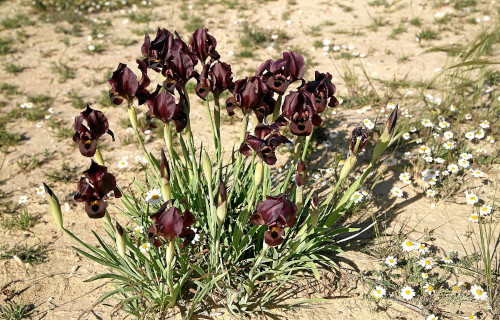
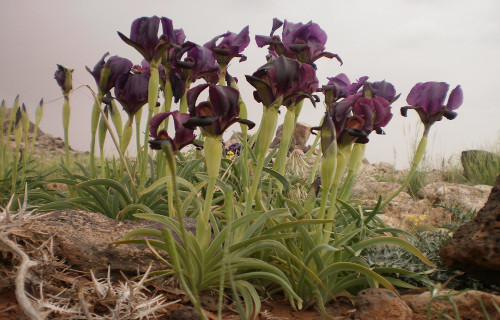
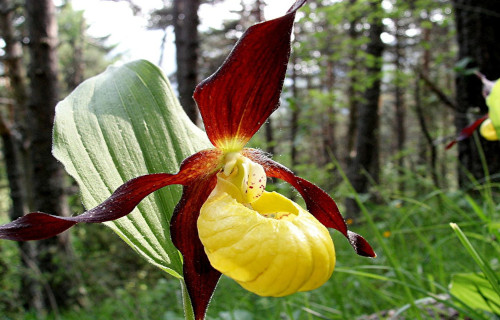
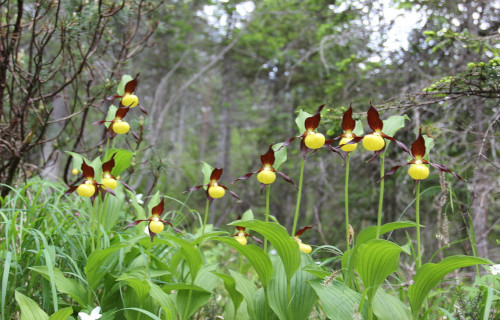
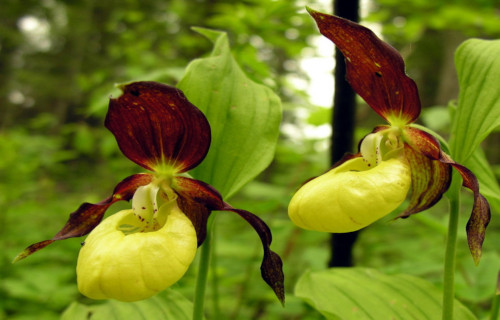









Leave a Reply